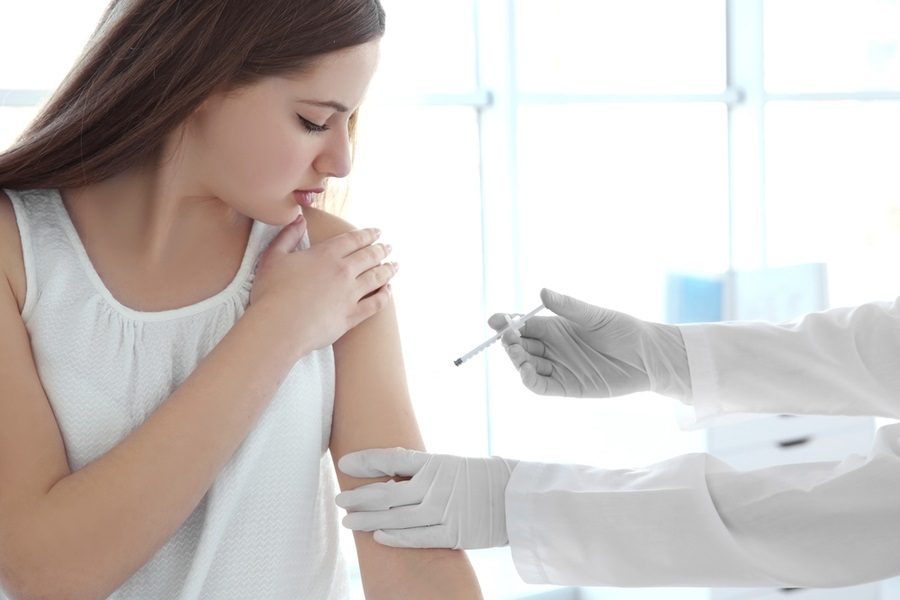
By Amy Ratner, Medical and Science New Analyst
Nexvax2, a vaccine being developed to treat celiac disease, induced tolerance of even high doses of gluten peptides in celiac disease patients, results of Phase 1 study presented recently at Digestive Disease Week showed.
After getting a gluten challenge designed to trigger a response at the start of the study, twelve participants with celiac disease were given increasing doses of the therapeutic vaccine. Eventually they were receiving a maintenance dose that had the equivalent immunogenic potency of about two loaves of bread, said Ken Truitt, MD, chief medical officer of ImmusanT, the company developing Nexvax2.
Nexvax2 is designed to target the cells that react to gluten and turn off the response in the 90 percent of celiac disease patients who have the HLA-DQ2.5 gene. As a result, gluten would no longer cause inflammation of the small intestine. As a therapeutic vaccine, Nexvax2 would treat disease as opposed to vaccines like those for the flu, measles or chicken pox, which are designed to prevent disease.
Cytokines: small secreted proteins released by cells that have a specific effect on the interactions and communications between cells. There are both pro-inflammatory and anti-inflammatory cytokines.
Over the seven weeks of the trial, researchers followed the celiac disease patients’ symptoms and measured interleukin-2 (IL-2), a cytokine in the blood that increases when the immune system is activated by gluten in those who have celiac disease and an associated gene. After the gluten challenge, IL-2 increased for all twelve participants, but both symptoms and IL-2 disappeared as the vaccine went to work protecting against the effect of gluten. One participant discontinued the trial before it was over due to abdominal pain.
Subcutaneous injection: an injection into the fatty tissues just beneath the skin that is shallower than an injection that goes into muscle tissue.
Intradermal injections: an injection into the dermis, the thick layer of skin between the epidermis and the subcutaneous tissue.
The results came in a study that compared the effectiveness of subcutaneous injection of the vaccine to intradermal injection. Scientists investigated subcutaneous injection because they suspected it would be “more amenable” to patients who would have to self-administer the vaccine over time, Truitt said. The dosing regimen, including maintenance doses, is designed to result in ongoing gluten tolerance. Booster shots of Nexvax2 would be needed to establish prolonged tolerance to gluten.
The study found subcutaneous dosing was generally safe and well tolerated, with “modestly higher peptide exposure,” compared to intradermal injection. When doses of Nexvax2 given by subcutaneous injection were increased as part of the study, participants did not have an immune response to the higher gluten-derived immunogenic peptides in the vaccine, according to Truitt.
The use of IL-2 in the serum of the blood as a biomarker for celiac disease was explored in a second study presented at DDW by ImmusanT. The study provided the first evidence that an acute gluten challenge in celiac disease patients provokes symptoms that correlate with increase in IL-2, according to Truitt. The study found that increases in IL-2 are “highly specific and sensitive to the gluten challenge,” suggesting if could be used for diagnosis in celiac disease patients.
“For the first time, we have shown a link between elevated serum IL-2 levels and gluten exposure for people with celiac disease,” Truitt said. “We have also shown early evidence that Nexvax2 is a safe and tolerable therapeutic vaccine with the potential to induce immune tolerance to gluten.”
More study is being done in a larger ongoing Phase 2 clinical trial called RESET CeD. Truitt said ImmusanT is looking to bring the “greatly needed new therapy to patients a soon as possible.”
In another study presented at DDW, researchers from the Mayo Clinic, ImmusanT and colleagues investigated the potential for IL-2 to differentiate between celiac disease patients and those who have gluten sensitivity.
Results also showed that symptoms were not a reliable indicator of whether someone had been exposed to gluten. Twenty celiac disease patients who had been on the gluten-free diet for at least two years and 20 who had gluten sensitivity and also followed the gluten-free diet were given either a gluten challenge or placebo. Study participants did not know whether they were getting a gluten challenge or placebo.
They then filled out symptom questionnaires over the next 72 hours and serum samples were collected in the same time period. Eight of 10 celiac disease patients who got the gluten challenge and 9 of 10 who got the placebo reported a significant increase in at least one symptom. The results were similar for the gluten sensitivity patients, with 9 of 10 who were gluten challenged and 8 of 10 who received the placebo reporting an increase in at least one symptom.
However, when the patients were asked if they had been challenged by gluten, only two of the celiac disease patients and four of the gluten sensitivity patients answered correctly.
Meanwhile, when IL-2 levels were measured, a significant increase occurred only in celiac disease patients who had been given the gluten challenge. The levels typically peaked at three hours after the gluten exposure and correlated with symptoms in the celiac disease patients. The study concluded that an acute rise in IL-2 differentiated those who have celiac disease from those who have gluten sensitivity.
DDW is an annual conference for physicians, researchers and academics in the fields of gastroenterology, hepatology, endoscopy and gastrointestinal surgery. The latest research in these fields is often introduced at DDW
Opt-in to stay up-to-date on the latest news.
Yes, I want to advance research No, I'd prefer not to